With Kieron Gillen & Jamie McKelvie’s The Wicked + The Divine nearing its conclusion, and a new hit series for Gillen in the form of Die, Image Comics hosted a spotlight panel at Emerald City Comic Con for the two creators. Gillen and McKelvie, who’ve also collaborated on books like Phonogram and Young Avengers, were joined by Image brand manager Sean Edgar for a wide-ranging discussion of the duo’s work for the publisher both individually and as a team.
Before the panel even started, Gillen and McKelvie quizzed the crowd on some Wicked + Divine and Phonogram trivia, awarding copies of the latest collected edition of WicDiv to the people who answered the questions correctly. Gillen also asked the audience to raise their hands if they either hadn’t read any of WicDiv, or hadn’t read past issue 11, so that they could quickly remove slides that featured major spoilers from the on-screen presentation.
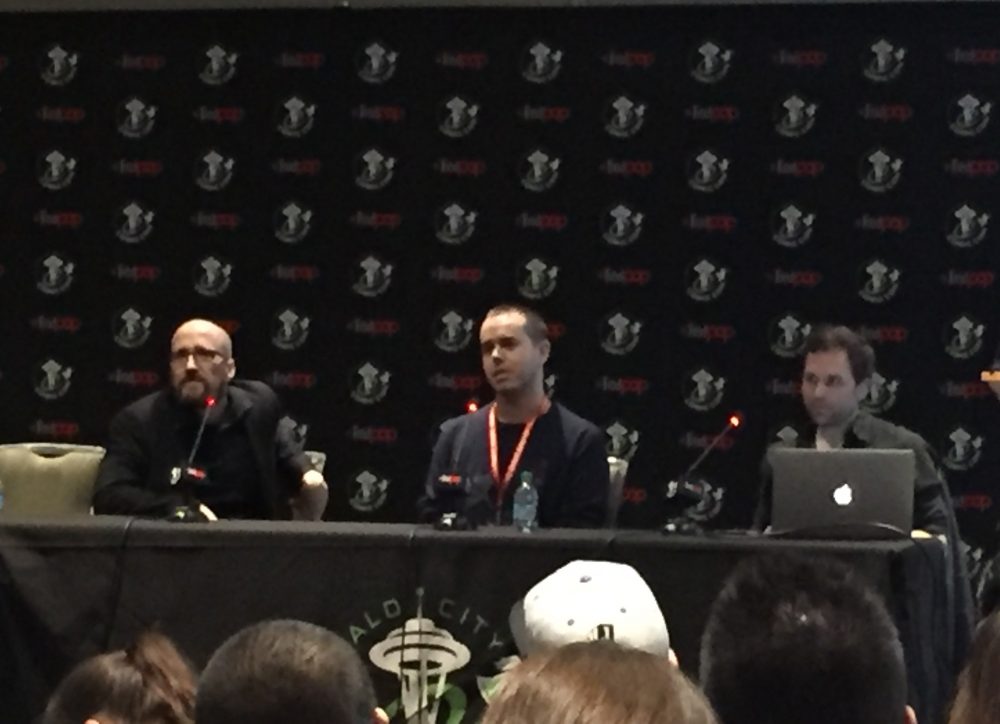 (L to R) Kieron Gillen, Jamie McKelvie, Sean Edgar
(L to R) Kieron Gillen, Jamie McKelvie, Sean EdgarThe panel officially started with a brief review of the pair’s history together. McKelvie described meeting Gillen at a convention after helping put together an anthology with the writer’s tablemate. The two then acted out their awkward first meeting, which consisted of Gillen looking at McKelvie’s portfolio and then immediately asking him to work on Phonogram. Gillen said he was immediately drawn to McKelvie because he could tell they shared similar interests and sensibilities, and that they were probably reading the same Oni Press comics like Blue Monday. Gillen listed the Chynna Clugston book, along with Hellblazer, as being a major influence for Phonogram. The pair also joked that they equally hate the Britpop band Kula Shaker.
Asked when he first had the idea for Phonogram, Gillen said he had no idea. Before writing comics Gillen was a music critic, which informed his writing for the series and its characters. He joked that the overall idea for the series came from ‘magic.’ McKelvie talked about Gillen wanting to integrate visuals from pop albums into the artwork for the first series covers, from the Elastica homage on Phonogram #1 to the Pulp “This is Hardcore” homage on the cover of the Rue Britannia trade paperback. While Gillen suggested the covers for the first miniseries, McKelvie came up with the covers for The Singles Club and The Immaterial Girl himself.
Moderator Edgar read some captions from Rue Britannia aloud, which Gillen described as akin to the podcast where people read their old terrible poetry. Talking about the Phonogram cast of characters, Gillen talked about being interested in bad people, calling all of his characters fundamentally flawed and either trying to better themselves or not. The initial volume of Phonogram preceded the later idea of ‘nostalgia porn’ and the need to get beyond the past. Gillen said that nostalgia flattens culture, and that while he initially hated nostalgia, he has eventually come to understand it as he’s gotten older.
Asked about how the pair represent music and sound visually in Phonogram, McKelvie called music and comics literal opposites. That representation at first seemed impossible, and McKelvie said that impossibility was part of what drew he and Gillen to the topic. Gillen said he thought the first Phonogram sort of worked around visualizing music, where the later volumes figured out how to do it more effectively.
After the first volume of Phonogram was completed, Gillen said they did The Singles Club in an attempt to expand the world of the series, and to show people that this was more than just a Britpop comic, which Rue Britannia focused on heavily. The Singles Club zeroed in on one night and explored it from seven different perspectives over seven issues. Gillen said that the series is fundamentally about addicts, and that all of the characters are basically a mess as a result of their different types of addiction.
Asked which of the characters in Phonogram he associated with the closest, McKelvie said none of them because they’re all terrible. To that, Gillen joked that McKelvie is like the somewhat dim Penny, to which McKelvie retorted that Gillen is like Rue Britannia‘s lead, David Kohl, who’s a real asshole. Gillen said he thinks he’s more like Lloyd, a character who’s in a ‘serious young man’ phase but who eventually grows out of it. Gillen said he took a similar journey when he was younger. Neither associates with Kid-with-Knife, who Gillen said is a real person from Stafford named Dan. A few other people Gillen knows are also in that character, the writer said, but he’s mostly Dan. Although Kid-with-Knife never takes out a knife in the series, Gillen assured the audience that the character does indeed carry a knife with him at all times.
The third Phonogram series, The Immaterial Girl, came about once they realized Phonogram wasn’t going to go on forever and that it was just going to be a trilogy. It was originally written by Gillen in 2012, but kept being delayed for one reason or another; McKelvie finally drew the series several years later while taking a break from Wicked + Divine. As a result of the delay between writing and drawing, the artist described working on the book as being like working with Gillen via time-travel. Gillen said that Immaterial Girl and Young Avengers were originally supposed to come out at the same time, and that you can place the individual issues of both series next to each other and see how they line up. He described the genesis of The Immaterial Girl‘s lead character Emily Aster, and how her having sold half her personality for power is a flip on ‘selling your soul to the devil.’
Ultimately Gillen said Phonogram is about “the subjective effect of music on individuals,” while Wicked + Divine is less about individuals and more about amping that idea up to cover the whole world. He called WicDiv “Ultimate Phonogram,” or basically a more marketable version of Phonogram.
Transitioning into Wicked + Divine, Gillen and McKelvie discussed the process of basing the different gods in the pantheon on pop icons. Gillen said he was on a plane listening to Florence + The Machine, imagining the distance between Florence and a girl in the audience, which eventually became a scene in the first issue of the series. McKelvie said they briefly considered making all of the gods different aspects of David Bowie before deciding to make each of the gods a different pop icon. Of the characters, Baphomet has changed the most from initial conception, though Gillen said he briefly considered using the design of Amaterasu for The Morrigan before the latter character ended up going in a different direction.
The full line-up of the gods to pop icons is:
- Lucifer – David Bowie
- Amaterasu – Florence Welch of Florence + The Machine
- The Morrigan – Patti Smith
- Baal – Kanye West
- Tara – Lauren Mayberry of CHVRCHES
- Inanna – Prince
- “Woden” – Daft Punk
- “Baphomet” – Andrew Eldritch of The Sisters of Mercy
Asked about how the look of WicDiv has evolved over the course of the series, McKelvie said he has to challenge himself in order to keep from getting bored. He said, in working with colorist Matt Wilson, that they wanted the fight scenes to feel like a music video, and that the moments of violence, often rendered as over-the-top ultra-violence, should be big and hit the reader hard.
Wicked + Divine #8 is mapped to an EDM beat, and both creators said doing that was a lot of work. Colorist Wilson had to completely reinvent his coloring technique as well, which caused the issue to take longer than normal. Gillen and McKelvie said they’re both proud of the issue, though Gillen wouldn’t put it in his top five of WicDiv issues because it didn’t quite capture the weirdness he wanted. He would later list his top five issues as #s 13, 14, 23, 33, and 36.
In talking about call-backs to previous issues, Gillen said those usually come about through a little bit of planning and a little bit of luck. If you plot well enough early on, the writer said, you can remember that you did things and then call back to them later on. Gillen also discussed the theme of the book as being about duality, illustrated by the use of quotes from Faust and from the song “Boom Boom Boom Boom” by The Venga Boys. The transition from intellectualism into silliness is essential to that theme, particularly in a book that goes from talking heads to scenes of giant pink robots fighting tendrils—it all has to fit in the book.
Wicked + Divine #36 follows a single recurring moment between two characters over 6000 years of history; McKelvie called the visual research process “four months of work squashed into six weeks.” Gillen agreed, saying that their schedules have never recovered from this issue. The writer said he initially thought the concept was a good idea because McKelvie is the best costume designer of his generation, and the issue would be a great showcase for his design work. McKelvie said, in total, he designed 132 characters for that one issue. The artist praised Matt Wilson’s work on the issue as well. So far McKelvie said only one person has pointed out anything that was wrong in the issue, which they’ve since fixed for the trade. Gillen said that he named a town wrong by about 1000 years in one of the recurrences and no one has mentioned that to him, though he did also fix that for the trade. McKelvie and Gillen both said working on the issue gave them an interesting perspective on history in general.
Asked about how they were handling the impending conclusion of Wicked + Divine, McKelvie said he plans to sleep for six months after the series ends. He also joked that he can finally block Gillen on Twitter, and that he and Gillen will have to get separate con banners now. Gillen said that using the word ‘last’ in relation to scripts, playlists, etc. feels weird, and that the series is something for which they could never do a sequel.
Talking about Gillen’s recently launched series with Stephanie Hans, Die, moderator Edgar noted that the series reads like Gillen hates RPGs even though he really loves them. Gillen likened writing the series to working on Phonogram, and said that to truly love something you have to have mixed feelings about it. While the series is very ‘down’ now, Gillen said it would eventually go ‘up.’ He also said that Die is the first time the writer has mined his teenage years.
On the subject of post-WicDiv projects, McKelvie has two books that he’s going to be working on, though he couldn’t talk specifics for either of them. One of the books will be one that he’s writing, while another will be by a writer with whom he’s friends. The artist said he feels somewhat trapped within the aesthetics of WicDiv at this point, and he’s excited to do different things once the series ends. The pair said they’ve never done a book as long as WicDiv, and they probably never will again.
In response to an audience question about the RPG featured in Die, Gillen said the Grief Knight is one of the eight knights in the game, which also features at least four good jokes.” The writer said the game will be available as a download along with the trade collection of the series.
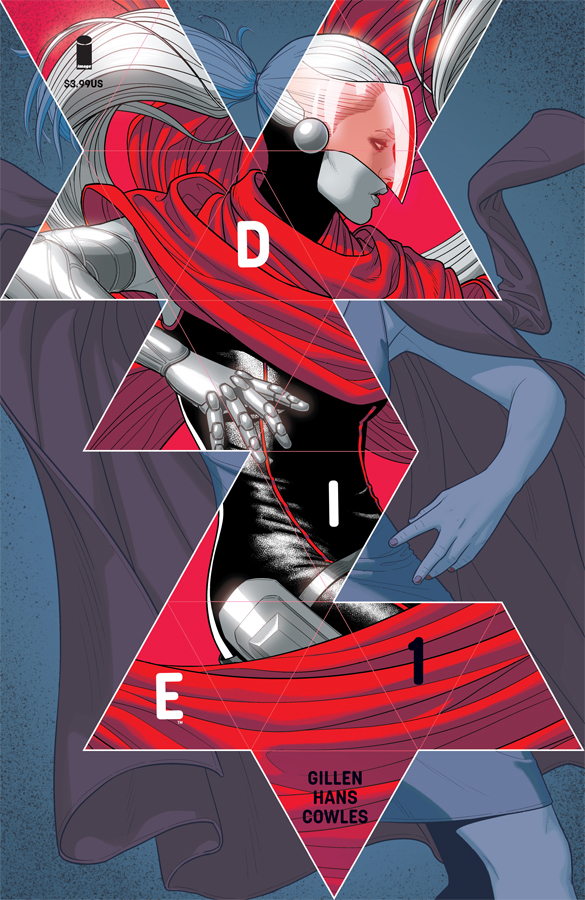 McKelvie’s variant cover to DIE #1
McKelvie’s variant cover to DIE #1Both Gillen and McKelvie answered a question about the differences between working on an ongoing series versus limited/miniseries projects by saying they prefer doing work with a definite beginning, middle, and end. Gillen said that he’s a structural thinker who looks at everything he writes like its a novel. This includes his work-for-hire work, even if he isn’t always able to tell the full story he wants to tell there.
An audience member asked which pop star Gillen and McKelvie would want the artist to design a new look for. Gillen said Janelle Monae, which McKelvie said nearly happened at one point before the timing fell through. McKelvie also said Monae would be his answer, though he would also do something for Carly Rae Jepsen.
McKelvie answered an audience question about fan interaction influencing their work by saying neither he nor Gillen can let that affect them too much. That said, the artist did say he was aware when designing costumes that they may end up being cosplayed. Gillen said the only time he lets fans affect his work is when readers don’t understand something and he has to explain it again more clearly. He also said he thought of working on WicDiv as being ‘on tour’ with the fans for five years, and that the level of passion from fans of the series is overwhelming.
Asked about scripting style and how Gillen is versus how much he trusts McKelvie, the writer described a comic script as a ‘love letter’ between the writer and artist. He said that for some artists he writes very clinically, whereas others he knows won’t do what he wants anyway so why bother. Working with McKelvie, Gillen said, is a more fluid scenario where they have a conversation about what needs to be in the issue and what effect Gillen has in mind. McKelvie said he wants to know what’s going on in a character’s head when he’s drawing them. He said the script for the first issue of WicDiv, for example, included not only the information for what was going on in that issue but also the explanation of what was going to happen down the line.
An audience member asked how to pronounce the name of the WicDiv‘s main villain, which is Badb. Gillen said he says it “bee-ay-dee-bee,” or, failing that, readers can just call her “a mean old lady.”
The final question was related to whether Gillen and McKelvie would update the visual references in the series if WicDiv were relaunched today. McKelvie said they would definitely do that, updating not only the visuals but certain aspects of fame and culture that have also changed over the years since the series first launched. Neither Gillen nor McKelvie said they would ever do that in comics, though.
With the panel concluded, Gillen and McKelvie met with fans outside the panel room who had cosplayed as WicDiv characters. Gillen shared the photo they took via Instagram:


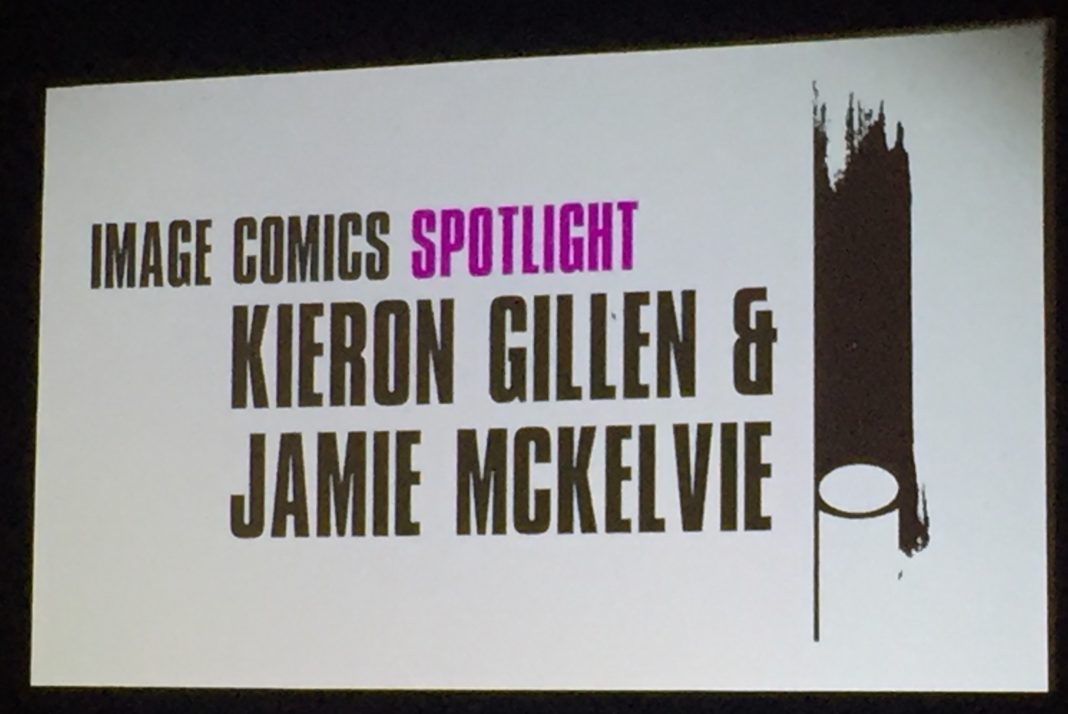
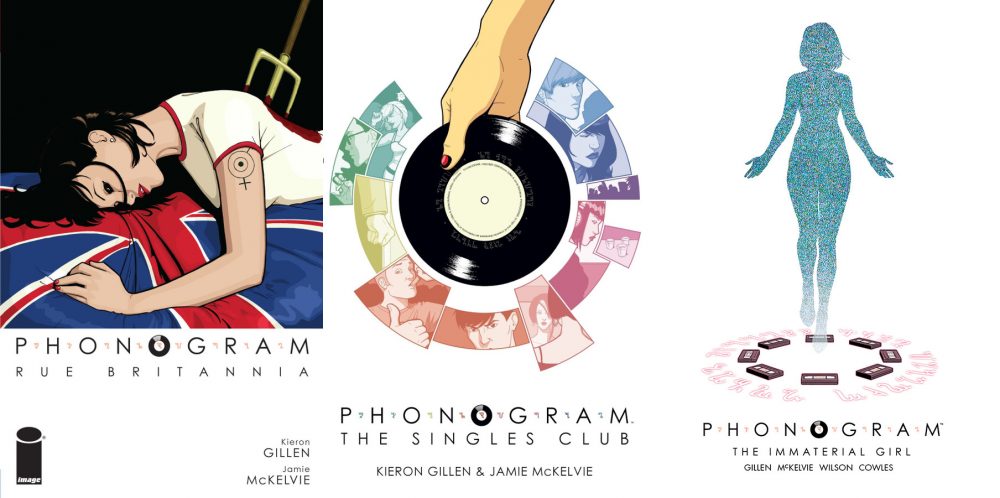
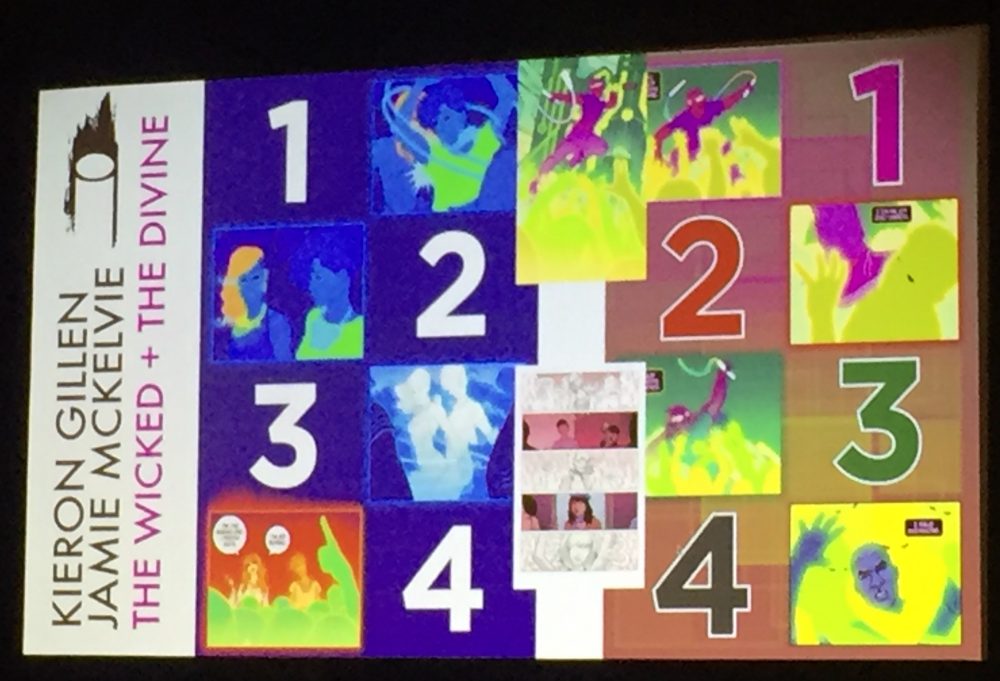
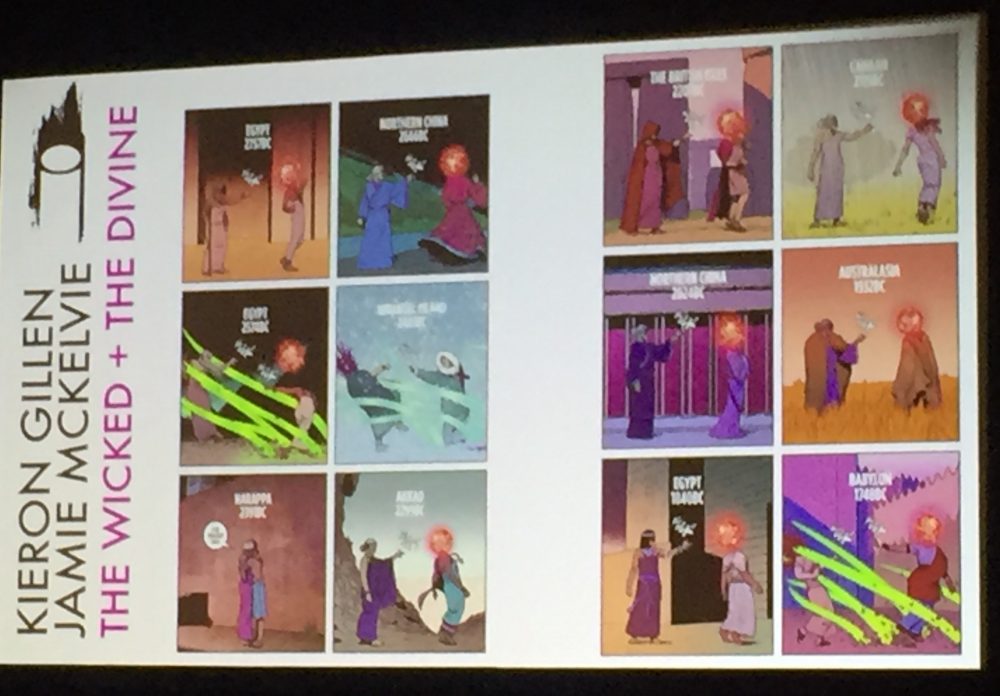
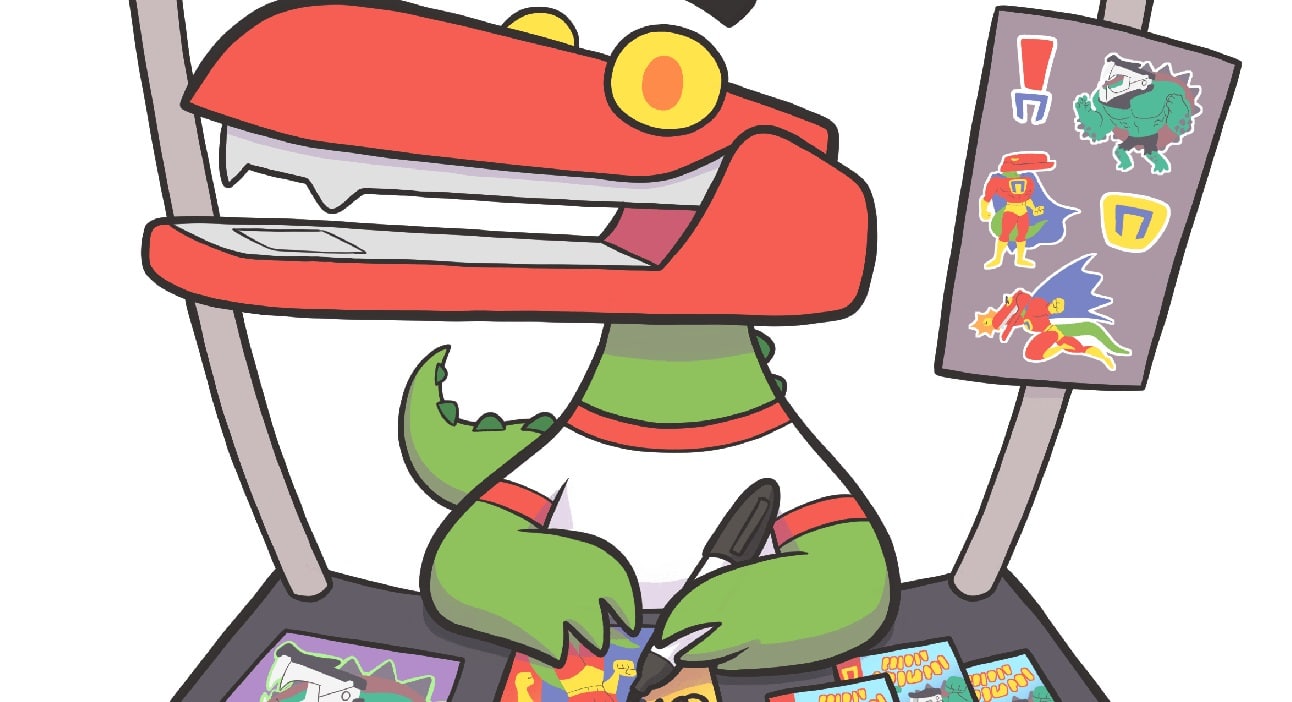
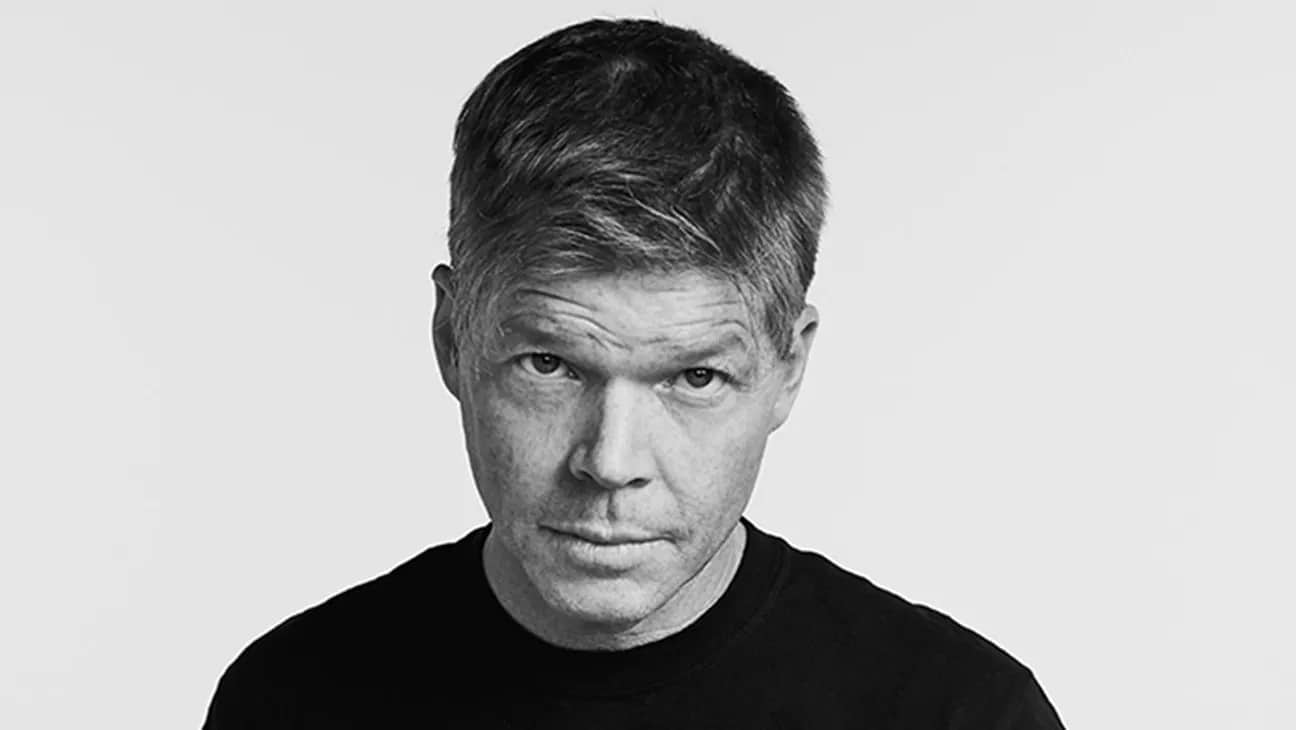
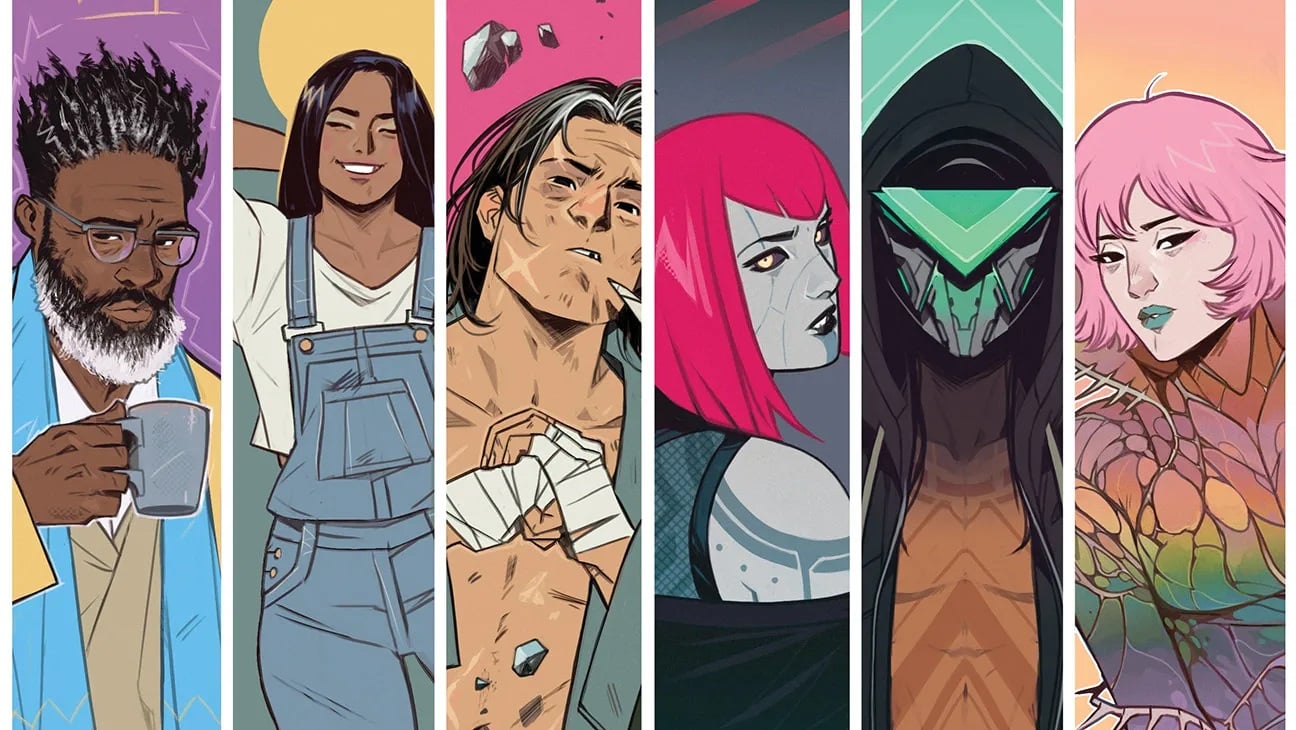



Comments are closed.